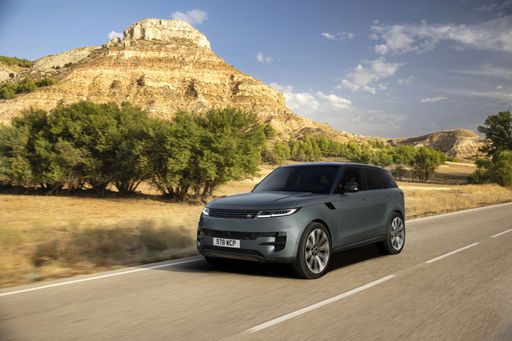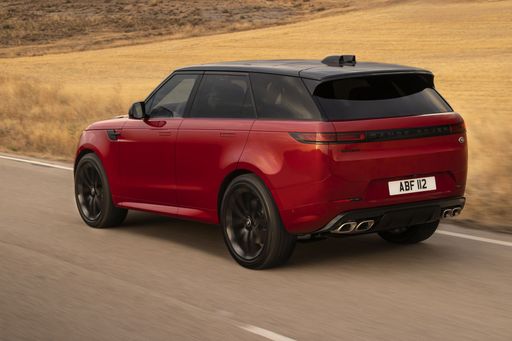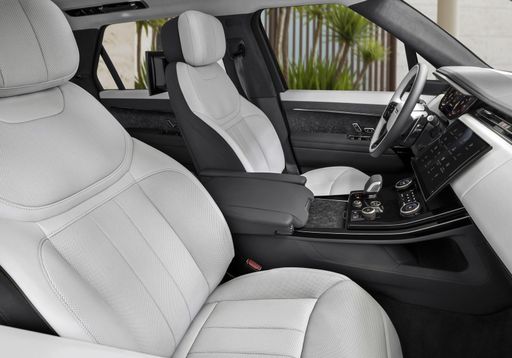Land Rover Range Rover Sport vs Hyundai IONIQ 9 – Differences & prices compared
Everyday use, family trips or long-distance drives – here’s where the differences show.
Discover whether Land Rover Range Rover Sport or Hyundai IONIQ 9 fits your lifestyle better.
Here’s where it gets real: The technical differences in detail
Costs and Efficiency: Looking at overall running costs, both models reveal some interesting differences in everyday economy.
Hyundai IONIQ 9 has a clearly perceptible advantage in terms of price – it starts at 58700 £, while the Land Rover Range Rover Sport costs 78600 £. That’s a price difference of around 19886 £.
As for range, the Hyundai IONIQ 9 performs clearly better – achieving up to 620 km, about 502 km more than the Land Rover Range Rover Sport.
Engine and Performance: Power, torque and acceleration say a lot about how a car feels on the road. This is where you see which model delivers more driving dynamics.
When it comes to engine power, the Land Rover Range Rover Sport has a noticeable edge – offering 635 HP compared to 428 HP. That’s roughly 207 HP more horsepower.
In acceleration from 0 to 100 km/h, the Land Rover Range Rover Sport is distinct quicker – completing the sprint in 3.80 s, while the Hyundai IONIQ 9 takes 5.20 s. That’s about 1.40 s faster.
In terms of top speed, the Land Rover Range Rover Sport performs noticeable better – reaching 290 km/h, while the Hyundai IONIQ 9 tops out at 200 km/h. The difference is around 90 km/h.
There’s also a difference in torque: the Land Rover Range Rover Sport pulls to a small extent stronger with 800 Nm compared to 700 Nm. That’s about 100 Nm difference.
Space and Everyday Use: Beyond pure performance, interior space and usability matter most in daily life. This is where you see which car is more practical and versatile.
Seats: Hyundai IONIQ 9 offers noticeable more seating capacity – 7 vs 5.
In curb weight, the Land Rover Range Rover Sport is slight lighter – 2390 kg compared to 2594 kg. The difference is around 204 kg.
In terms of boot space, the Land Rover Range Rover Sport offers clearly more room – 647 L compared to 338 L. That’s a difference of about 309 L.
In maximum load capacity, the Hyundai IONIQ 9 performs clearly perceptible better – up to 2419 L, which is about 928 L more than the Land Rover Range Rover Sport.
When it comes to payload, Land Rover Range Rover Sport distinct takes the win – 830 kg compared to 643 kg. That’s a difference of about 187 kg.
Our conclusion: The Hyundai IONIQ 9 proves to be wins by a narrow margin and thus becomes our DriveDuel Champion!
Overall, Hyundai IONIQ 9 is the better all-rounder in this comparison.
Land Rover Range Rover Sport
The Land Rover Range Rover Sport exudes a commanding presence, combining luxury with exceptional off-road capabilities. Its sleek, modern design is complemented by a meticulously crafted interior that offers both comfort and advanced technology. With its powerful performance and refined handling, this vehicle is ideal for both urban environments and adventurous terrains.
details @ media.landrover.com
@ media.landrover.com
 @ media.landrover.com
@ media.landrover.com
 @ media.landrover.com
@ media.landrover.com
Hyundai IONIQ 9
The Hyundai IONIQ 9 is a bold step forward in the automotive world, combining cutting-edge electric technology with a sleek and modern design. This model stands out with its spacious interior and advanced features, ensuring both comfort and convenience for drivers and passengers alike. As Hyundai pushes the envelope in eco-friendly innovation, the IONIQ 9 represents the future of sustainable driving with its impressive range and performance capabilities.
details

|
|
|
|
|
Costs and Consumption |
|
|---|---|
|
Price
78600 - 175700 £
|
Price
58700 - 74400 £
|
|
Consumption L/100km
2.7 - 11.7 L
|
Consumption L/100km
-
|
|
Consumption kWh/100km
-
|
Consumption kWh/100km
19.9 - 20.6 kWh
|
|
Electric Range
116 - 118 km
|
Electric Range
600 - 620 km
|
|
Battery Capacity
31.80 kWh
|
Battery Capacity
110 kWh
|
|
co2
61 - 266 g/km
|
co2
0 g/km
|
|
Fuel tank capacity
71 - 90 L
|
Fuel tank capacity
-
|
Dimensions and Body |
|
|---|---|
|
Body Type
SUV
|
Body Type
SUV
|
|
Seats
5
|
Seats
7
|
|
Doors
5
|
Doors
5
|
|
Curb weight
2390 - 2810 kg
|
Curb weight
2594 - 2689 kg
|
|
Trunk capacity
647 L
|
Trunk capacity
338 L
|
|
Length
4946 - 4970 mm
|
Length
5060 mm
|
|
Width
2043 mm
|
Width
1980 mm
|
|
Height
1814 - 1820 mm
|
Height
1790 mm
|
|
Max trunk capacity
1491 L
|
Max trunk capacity
2419 L
|
|
Payload
640 - 830 kg
|
Payload
586 - 643 kg
|
Engine and Performance |
|
|---|---|
|
Engine Type
Plugin Hybrid, Petrol MHEV, Diesel MHEV
|
Engine Type
Electric
|
|
Transmission
Automatic
|
Transmission
Automatic
|
|
Transmission Detail
Automatic Gearbox
|
Transmission Detail
Reduction Gearbox
|
|
Drive Type
All-Wheel Drive
|
Drive Type
Rear-Wheel Drive, All-Wheel Drive
|
|
Power HP
249 - 635 HP
|
Power HP
218 - 428 HP
|
|
Acceleration 0-100km/h
3.8 - 7.7 s
|
Acceleration 0-100km/h
5.2 - 9.4 s
|
|
Max Speed
206 - 290 km/h
|
Max Speed
190 - 200 km/h
|
|
Torque
570 - 800 Nm
|
Torque
350 - 700 Nm
|
|
Number of Cylinders
6 - 8
|
Number of Cylinders
-
|
|
Power kW
183 - 467 kW
|
Power kW
160 - 315 kW
|
|
Engine capacity
2997 - 4395 cm3
|
Engine capacity
-
|
General |
|
|---|---|
|
Model Year
2025
|
Model Year
2025
|
|
CO2 Efficiency Class
B, G
|
CO2 Efficiency Class
A
|
|
Brand
Land Rover
|
Brand
Hyundai
|
Is the Land Rover Range Rover Sport offered with different drivetrains?
The Land Rover Range Rover Sport is offered with All-Wheel Drive.
The prices and data displayed are estimates based on German list prices and may vary by country. This information is not legally binding.
